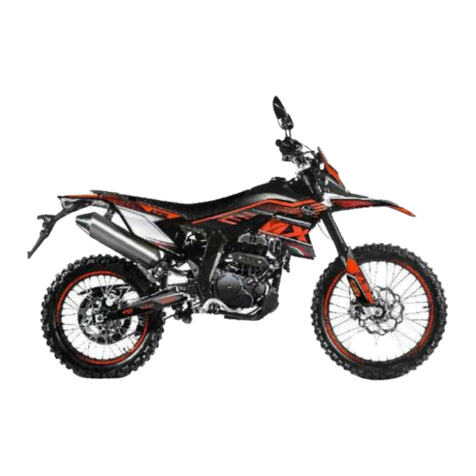
GENERAL RULES
7
Cleaning of sensitive parts
BODYWORK
To keep the motorcycle bright, wash it regularly, especially if used in areas with elevated levels of pollution or mud. Aggressive
stains from tree resins, gasoline, oil, brake fluid or bird excrement in general must be removed immediately, otherwise
permanent stains on the paint can appear. After washing it is easy to identify marks and residual stains, remove them from the
body using a soft cloth, non-abrasive polish, and protect with a protective wax for cars. Periodic care, a thorough cleaning and
regular protective wax for the bodywork preserves the aesthetic quality of the motorcycle over the long term.
Plastic components
If the plastic components are cleaned using aggressive agents, the surface may be damaged.
Do not use cleaning products containing alcohol, solvents or that are abrasive for the cleaning of plasticparts.
Rotatory brushes or sponges with hard surfaces can cause scratches.
Chrome parts and polished metal
Treat the chromed parts like aluminum or polished steel in a special manner.
Wash them with plenty of water car shampoo, polish and regularly brighten them with polishing.
Products, protect them with waxes or suitable acid-free products ( e.g. Vaseline).
Radiator
If using the motorcycle in the winter on roads with deicing salt, regularly wash the radiator to prevent
aesthetic damage and the engine from overheating.
Wash using plenty of water, for example, use a garden hose with water at low pressure.
Rubber parts
Clean the rubber parts by using water and mild shampoo (product for car wash).
The silicone spray usage to clean the rubber seals may cause damage.
Do not use other products containing silicon for cleaning the motorcycle.
E































